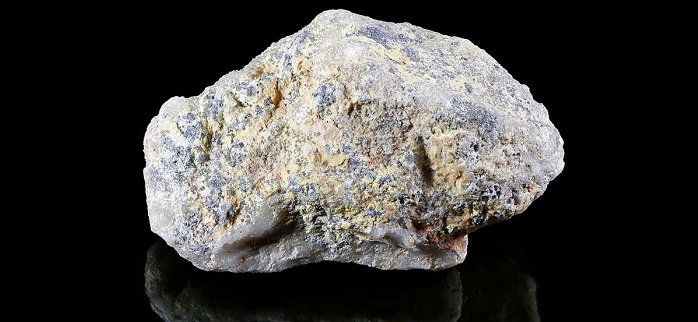Earth

“Rare minerals represent Earth’s truest distinction from all other planets, reveal the sub-surface conditions that created them and offer insights into our planet’s past biological upheavals,” says Robert Hazen of the Carnegie Institution in Washington DC, who compiled the list with Jesse Ausubel of Rockefeller University, New York.
Half of the 5000 known minerals on the planet are each found in five or fewer locations, and the entire known volume of some is less than one cubic centimetre, small enough to fit into a matchbox.
And far from all being rock solid and unchanging, many are highly ephemeral. Some minerals evaporate on contact with air, others decompose in sunlight.
These rocks are far rarer than the minerals known as rare earths, such as scandium and yttrium, that are used in modern electronics.
Hiding in plain sight
Some only turn up in minute quantities. Such minerals hiding in plain sight include ottoite and a number of others containing tellurium spotted under the microscope in rocks from Otto Mountain, near San Bernadino in California.
So why is the planet stocked with so many rare minerals? Sometimes it is because the elements that comprise them can only get together under highly unusual conditions. Geologists have only found hazenite, a hydrous phosphate, in the extremely alkaline Mono Lake, again in California, where it is precipitated out by microbes at a pH of 10.
Fingerite, a combination of copper and vanadium, is only known in the fumaroles of the Izaico volcano in El Salvador. Other minerals are rare because they are unstable under most conditions. Harmunite may be made of common elements – calcium, iron and oxygen – but it is destroyed on contact by one of the commonest minerals of all: silica. So far it has only been found in two places.
And hatrurite, discovered in the Hatrurim Formation, in Israel, is made up of super-abundant silicon, calcium and oxygen, but forms only above 1250 °C, and in the absence of aluminium.
Other rare rocks are made of rare elements that don’t often come together. So beryllium and antimony get together in a crystal called swedenborgite, and germanium and tellurium in alburnite, a mineral that was first discovered in 2014 in the mountains of Romania.
Sidelined specimens
A few rocks on the list only exist in theory at present. Nobody has ever found carbon dioxide in a crystalline form, says Hazen, because it is only stable below -78.5 °C, which would restrict it to a few places in Antarctica, though it’s been spotted on Mars.
Sidelined by geologists because they are apparently insignificant in the big picture of Earth sciences, these novel minerals are no mere novelties, Hazen insists.
Often created under extreme conditions, they could yield important secrets about both the creation of the Earth and its crust, and of life itself. Indeed, some theories of origins of life, suggest the involvement of sulfates, borates and molybdates.
Two-thirds of rare minerals arise as a consequence of biological processes, such as biomineralisation, the authors say. These minerals could shed light on the co-evolution of biology and geology. And looking for them in space could be a good way to seek out the presence of life on other worlds, says Ausubel.















































